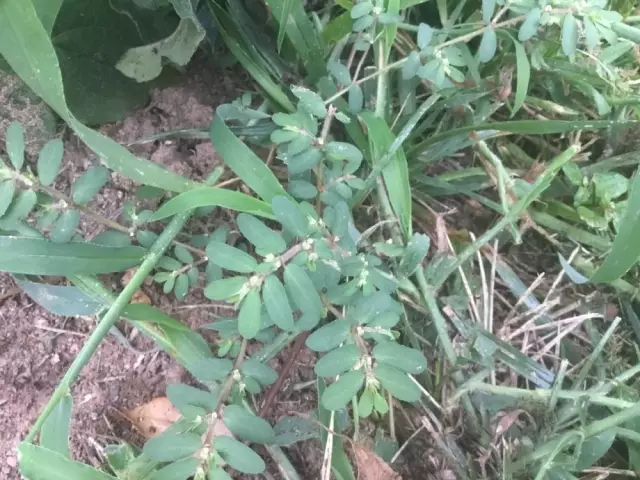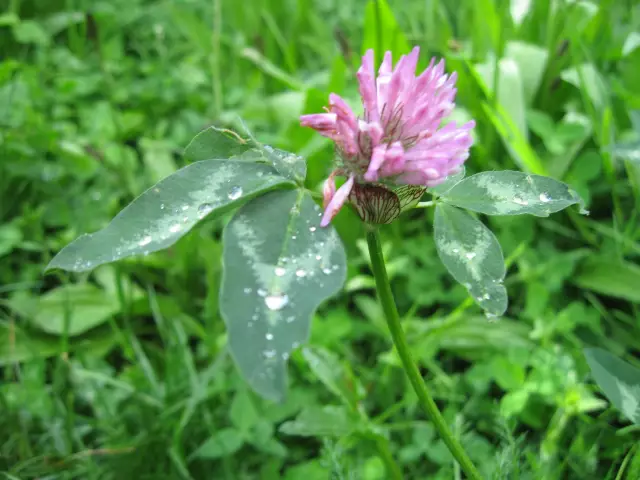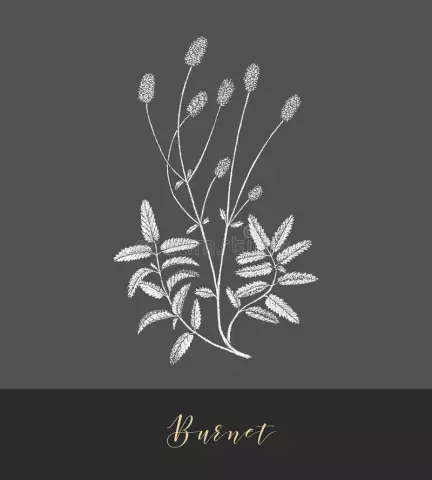- Author Rachel Wainwright [email protected].
- Public 2023-12-15 07:39.
- Last modified 2025-11-02 20:14.
Highlander serpentine
Instructions for use:
- 1. The composition and useful properties of the mountaineer
- 2. Application of the highlander
- 3. Contraindications and harm of the mountaineer

Snake mountaineer is a perennial herbaceous shrub that has many other names that are used by the people. So, it is also called:
- Gorlets;
- Veal tongue;
- Snake root;
- Meadow Highlander;
- Viper grass;
- Cancer necks;
- Coil.
The plant owes these names to the peculiarities of the shape of its rhizome. The root of the serpentine knotweed is bent twice, slightly flattened and contains transverse folds. Thus, most of all, the root of the mountaineer snake looks like a snake. The root is dark brown in color, and pink inside.
Highlander serpentine belongs to the buckwheat family. On the stem of the plant there are several basal leaves and one to four leaves on top. The flowers of the serpentine mountaineer are pink, small, collected in a large inflorescence at the top. Plant height ranges from 50 to 100 cm. The fruit of the snake mountaineer is a smooth dark brown nut. The plant blooms in May - June, and the fruits ripen in July.
The snake mountaineer grows everywhere (in the glades, in the bushes), he loves damp places. It is absent only in the Caucasus and Central Asia.
The composition and useful properties of the snake mountaineer
The most important and valuable components of the mountaineer snake are tannins. At the root of the plant, tannins (such as tannin) are 15 to 25%. In addition, the root of the mountaineer snake contains the following substances:
- Free polyphenols;
- Oxyanthraquinones;
- Starch;
- Protein;
- Calcium oxalate;
- Vitamin C;
- Provitamin A;
- Dyes.
Free polyphenols are present in the plant in the form of gallic acid and catechin. And the starch in the root of the mountaineer snake is about 26%. In addition, the root of the knotweed snake contains acids (free gallic and elaidic).
The herb of the plant also contains ascorbic acid and flavonoids. So, valuable representatives of the flavonoid group in the snake mountaineer are:
- Hyperozide;
- Rutin;
- Avikularin.
Snake mountaineer serves as a powerful source of tannins for the human body, therefore this plant is successfully used as an astringent for diarrhea and as an anti-inflammatory - for inflammation of the nasopharynx. The effect of the root of the mountaineer snake on the human body can be compared with galangal and oak bark.
The main properties of preparations based on snake knotweed root are:
1. Astringent;
2. Resorptive sedative;
3. Anti-inflammatory;
4. Hemostatic.
The astringent properties of the plant, when taken orally, manifest themselves rather slowly, in the course of the splitting of the active substances, with the direct influence of the digestive juices of the body. In addition, these drugs are low-toxic and do not have side effects.
With external use of drugs based on this plant, it is also possible to relieve inflammation, stop bleeding.
Application of the serpentine mountaineer

Serpentine rhizome has long been known as a medicine. So, in the Chinese Encyclopedia of Medicines in the XI century BC, the medicinal properties of this plant were already mentioned. And in the Indo-Tibetan medical literature, the use of the coil as a medicine was also mentioned.
The most valuable is medicinal raw material from the root of the mountaineer snake. Moreover, the largest amount of nutrients is found in plants after the age of 15 years. That is why, the preparation of the root of the mountaineer snake is made using raw materials from plants aged 15-30 years. Outwardly, a good rhizome should be firm, necessarily serpentine, dark brown on top, pink inside. The length of the root of the mountaineer snake should be from 5 to 10 cm. The thickness of the root is 1 - 2 cm. It tastes bitter and strongly astringent, but the plant does not emit any smell.
The root of the mountaineer snake is harvested either in summer, after the plant has faded, or in early spring. The rhizome, together with the roots-shoots, is dug up, small roots and stems are cut off, washed from the ground. It should be noted that when harvesting, you need to get rid of rotten rhizomes, since they are not beneficial, but harmful to health. Then the raw material is washed again and dried a little in the fresh air. Now the root is cut into pieces. Then the root of the knotweed snake must be dried: this is done in special dryers with a temperature of no more than 60 degrees, or simply in the attic or other ventilated and warm room. Too fast or, on the contrary, prolonged drying leads to the loss of the beneficial properties of the root. So, unsuitable for use is a root with kinks, with blackened areas or acquiring a brown color from the inside. The root of the mountaineer snake is stored in a dry and ventilated room for up to 6 years.
For home treatment, decoctions are prepared from the root of the mountaineer snake. Such a decoction is used, first of all, for problems with the intestines. So, this medicinal plant helps in the fight against acute and chronic intestinal diseases, for example, in the acute form of colitis. In this case, take a decoction from the 1st part of the horse and 10 parts of water, 1 tbsp each. up to five times a day.
The root of the mountaineer snake has an excellent fixing property for the following health problems:
- Stomach ulcer;
- Duodenal ulcer;
- Gallstones;
- Dysentery;
- Bladder stones;
- Pulmonary bleeding;
- Hemorrhoids;
- Cracked rectum;
- Urethritis.
In these cases, prepare a decoction at the rate of 20 parts of the root and 200 parts of water. They also take 1 tbsp. l. broth 3 - 4 times a day, always before meals.
In addition, the anti-inflammatory and astringent properties of the plant are used for diseases such as:
- Enteritis;
- Uterine bleeding;
- Gastrointestinal bleeding;
- Inflammation of the gums;
- Stomatitis;
- Gingivitis;
- Diarrhea (diarrhea), with blood.
The root of the mountaineer snake is also used in powder form. This composition disinfects open fresh wounds, cuts, boils, ulcers, eczema. You can also treat wounds with decoction and infusion, make lotions and compresses. Knotweed root helps to quickly stop bleeding and inhibits the development of microbes. The decoction of the plant can be used for douching, for example, in the case of colpitis (vaginitis).
A decoction of the root of the mountaineer snake rinse the throat and mouth for any inflammatory diseases.
Contraindications and harm of the snake mountaineer
A contraindication to the use of the root and other parts of the mountaineer snake is an increased sensitivity of the stomach. This is due to the fact that in this case, a large intake of tannins into the body brings harm, not benefit. In addition, it should be remembered that prolonged use of Knotweed root during treatment can lead to constipation. Therefore, it is necessary to be treated with such a remedy carefully, and always under the supervision of the attending physician.
Knotweed should not be used to treat small children under 2 years of age.
Information about the drug is generalized, provided for informational purposes only and does not replace the official instructions. Self-medication is hazardous to health!






